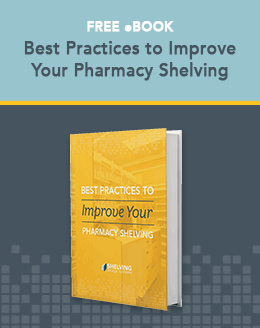 In order to create sterile preparations as required by law, pharmacists must create and work in so-called "clean rooms," as established by USP Chapter 797, published by the United States Pharmacopeia. To create a pharmacy clean room, the following conditions must be met:
In order to create sterile preparations as required by law, pharmacists must create and work in so-called "clean rooms," as established by USP Chapter 797, published by the United States Pharmacopeia. To create a pharmacy clean room, the following conditions must be met:
-
HEPA filtration
A high-efficiency particulate air (HEPA) filter that meets current Institute of Environmental Sciences and Technology (IEST) standards as set forth in the current national guide must be used in the clean room. The IEST document identifies a qualifying HEPA filter as one that has a maximum particle penetration of .03%, with minimum particle collection efficiency of 99.97% for particles that are 0.3 µm in diameter for aerosol or thermally generated DOP.
HEPA filters are effective at removing most particulate contamination, but not gases and vapors; the National Institute for Occupational Safety and Health (NIOSH) thus requires isolators and BSCs, or biological safety cabinets, be vented externally.
-
Classification of the pharmacy clean room
The classification of the clean room is based upon the number of particles that are 0.5 µ in size in a cubic meter of sampled air within a particular class as established by the International Organization for Standardization (ISO). Requisite particle counts are achieved by filtering air through HEPA filters as described previously.
-
Air changes per hour
For an ISO class 7 or 8 room, consider how many air changes per hour, or ACPH, will be taking place via inflow air that's been HEPA filtered. The most important factor in this is the air volume in cubic feet per minute, or CFM, that enters the room. Although USP 797 doesn't specify a minimum number of air changes, the minimum value will be based on two things:
-
Air cleaning regulatory expectations The FDA's minimum is 20 air changes per hour as "current good manufacturing practice" Guidance for Industry-Sterile Products Produced by Aseptic Processing. ISO specifications for microelectronics clean rooms are 30 to 70 air changes per hour. Although not specific to sterile compounding, this is good general guidance in regard to the pharmacy clean room.
-
The amount of conditioned air required for the space. This factor needs to be established by an HVAC engineer qualified in determining pharmacy clean room parameters. Factors that affect volume include fan energy, lighting, thermal loads from people, lighting, etc. Once the required ACPH have been calculated, the volume of air can be calculated to determine the total airflow volume needed in cubic feet per minute, or CFM.
-
Air pressure
Pressurization measures air pressures between two areas that adjoin each other, with the air pressure in the pharmacy clean room, for example, higher than the pressure in the adjoining area. The cleanest air flows to the less stringently controlled area, with pressure gradients between those with equal classifications for cleanliness generally less than 0.05 inches, or as low as 0.02 inches.
-
Construction materials
The materials used must contribute to the environment's cleanliness and must be able to withstand heavy use by personnel, as well as frequent disinfection cleaning. The room should be constructed ISO that it has the fewest crevices, joints and cracks possible. The materials used should withstand deterioration over time, so as to limit contamination and ensure good particle control.
-
Design
The space should be designed such that the workflow pattern, floorplan of space in which the clean room is going to be constructed, construction materials, and specifications for environmental control are laid out clearly in written form and approved by those involved in the construction. Specifications should be written into the construction contract, with certification requirements included so that the finished clean room meets all necessary parameters.




